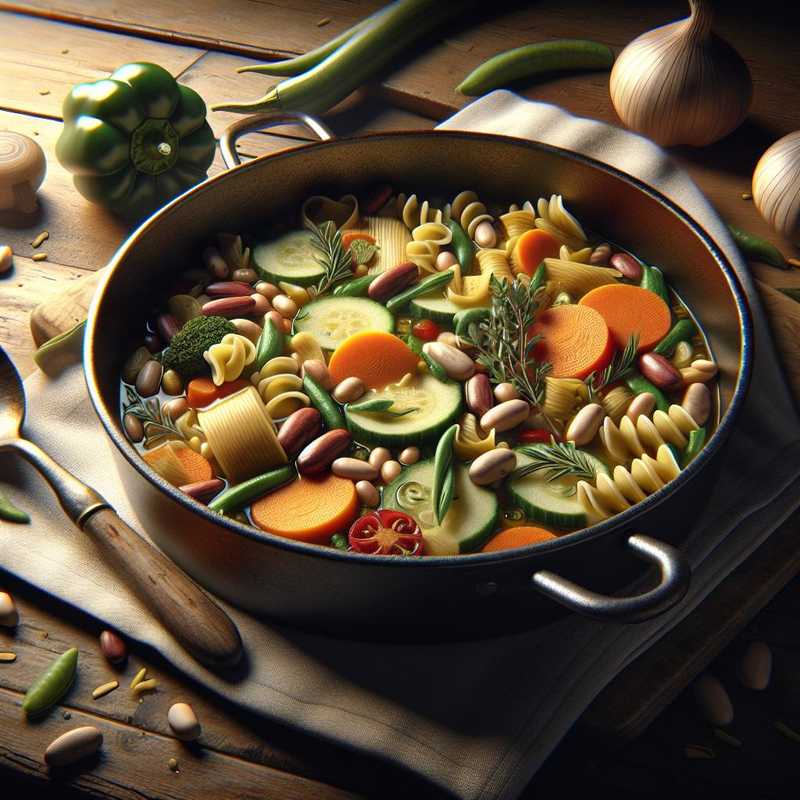Winter vegetable minestrone
17/11/2023Here is the recipe for winter vegetable minestrone, a warm and comforting dish perfect for the colder months. You can then enrich it with ingredients of your liking or replace the indicated vegetables with others of your choice.
Ingredients
- 2 carrots
- 2 potatoes
- 1 zucchini
- 1 leek
- 150 g of savoy cabbage
- 150 g of green beans
- 1 stalk of celery
- 400 g of peeled tomatoes or tomato purée
- 100 g of precooked borlotti beans
- 1 onion
- 1 clove of garlic
- 1 liter of vegetable broth or water
- Extra virgin olive oil
- Salt and pepper to taste
- A pinch of chili pepper (optional)
- Aromatic herbs to taste (e.g., rosemary, thyme, bay leaf)
Preparation
-
Clean and cut all the vegetables into similarly sized cubes. This will ensure even cooking.
-
In a large pot, sauté the chopped onion and garlic clove with a drizzle of extra virgin olive oil until transparent. If you prefer, you can remove the garlic after it has flavored the oil.
-
Add the chopped leek and let it soften for a few minutes.
-
Add the carrots, celery, potatoes, and zucchini. Sauté the vegetables for a few minutes.
-
Pour in the peeled tomatoes or tomato purée, mix well.
-
Add the vegetable broth or water until all the vegetables are covered. If using water, you will need to adjust the salt later.
-
Bring to a boil, then reduce the heat and let it simmer gently until the vegetables begin to soften.
-
At this point, add the savoy cabbage and the green beans cut into pieces, as well as the borlotti beans.
-
Adjust the salt, pepper, and if you like, add a pinch of chili pepper.
-
Add the aromatic herbs of your choice and cook for another 15-20 minutes, or until all the vegetables are completely cooked.
-
If you prefer a creamier minestrone, you can blend part of the vegetables with an immersion blender before serving.
Serve hot, perhaps with a drizzle of raw extra virgin olive oil and some crusty bread on the side.
Curiosity
Minestrone is a very versatile recipe that allows for numerous variations depending on the season and the available ingredients. In some variations, rice or pasta is added to make the dish even more substantial. The word “minestrone” comes from the term “minestra,” which originally indicated a dish of boiled vegetables, with the suffix “-one” giving it a value of abundance and variety of ingredients.
